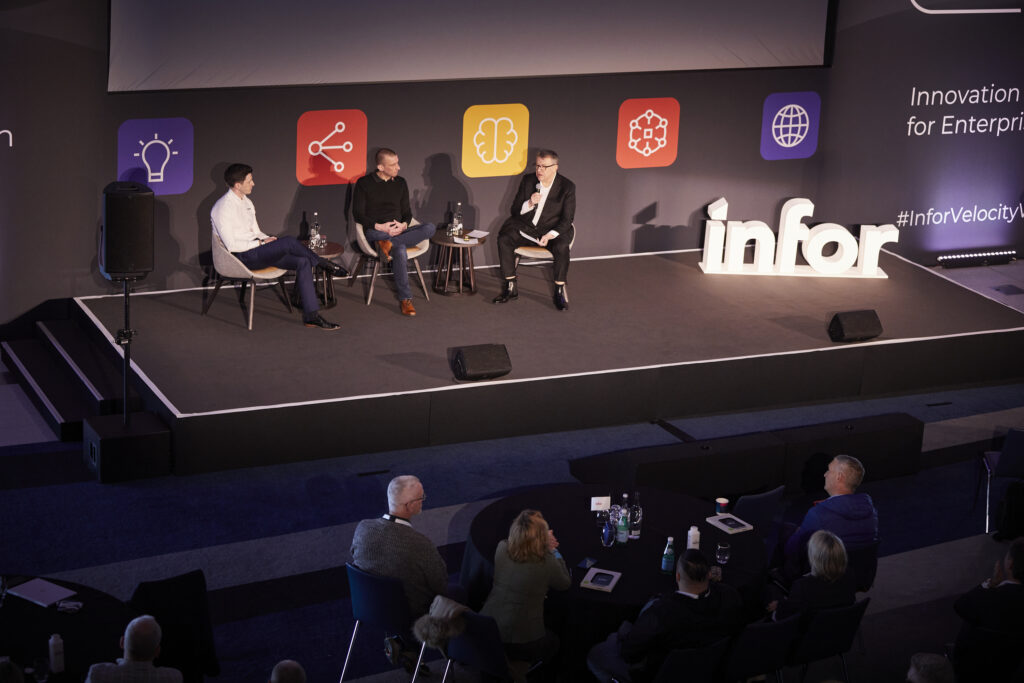Tackling Scope 3 emissions can seem like a daunting task – but it’s a necessary aspect of any net zero plan Coming out of COP26, business leaders across all industries pledged to accelerate climate action throughout every aspect of their organisations. Customers, investors and regulators now expect clear, detailed plans for how organisations will achieve net zero. In the UK, the government required UK-listed companies to release net zero plans by 2023.
These plans should include carbon emissions targets for three ‘scopes’. Scope 1 relates to direct emissions from owned or controlled sources. Scope 2 covers indirect emissions from the generation of purchased electricity, steam, heating and cooling consumed by the company.
A big focus, however, is on Scope 3. The hardest to meet, this group includes all other indirect emissions that occur in a company’s value chain. Upstream emissions could include those generated by their distribution activities, and the production of raw materials or components bought by the company. Downstream, the term covers emissions generated by the use or disposal of the end product that the company sells, as well as all their business travel.
It is estimated that for many businesses, Scope 3 emissions account for more than 70 percent of their carbon footprint.
That means that tech companies must not only seek to make their own businesses more sustainable but must also consider how their products and services help their customers become greener. Moreover, they are compelled to act to reduce emissions in their upstream and downstream supply chains.
A focus on emissions of suppliers and their products
Many of the global tech companies have been trumpeting their sustainability credentials for years.
Two years ago, Microsoft committed to not only becoming carbon negative, zero waste and water positive by 2030, but also to removing all the historic carbon Microsoft has emitted since its founding by 2050.
“To reach these goals, we’re taking a transparent approach, and we’re not only focussing on reducing our carbon emissions, but also the removal of carbon directly from the atmosphere,” says Hugh Milward, general manager of corporate, external and legal affairs at Microsoft UK. “Just last year, Microsoft purchased the removal of 1.3 million metric tons of carbon from projects around the world, the largest purchase made by any corporate to date.”
However post-COP26, the momentum to ensure carbon reduction has increased.
When it comes to its supply chain, Microsoft has expanded its internal carbon tax to include Scope 3 emissions. “This decision has already encouraged teams to focus more closely on the emissions of their suppliers and their products,” says Milward.
“We also want to help our customers on their own sustainability strategy and believe that the knowledge we gain from our own efforts should be shared to benefit others. Last year, we launched our most recent report, ‘Accelerating the journey to net zero’, that offers a blueprint to help organisations set their own sustainability and carbon reduction commitments. We also announced the preview of ‘Microsoft Cloud for Sustainability’ which is designed to offer tools to help our customers measure, understand and take charge of their carbon emissions.”
“We’re not only focussing on reducing our carbon emissions, but also the removal of carbon directly from the atmosphere”, Hugh Milward, Microsoft UK

Reducing carbon in construction
Like Microsoft, the other global public cloud providers have all been vocal in their efforts to achieve carbon neutrality.
Amazon says it is on a path to powering its operations with 100 percent renewable energy by 2025 -five years ahead of target. In fact, Amazon says it is the world’s largest corporate buyer of renewable energy, reaching 65 percent renewable energy across the business in 2020.
When it comes to Scope 3, one of the largest sources of indirect emissions comes from constructing datacentres and the manufacturing of hardware, says Jake Oster, senior manager, public policy at AWS and AWS ED.
“To reduce our Scope 3 emissions, our sustainability, engineering, construction and procurement teams are looking into using recycled by-products from other industrial processes, like manufacturing iron and steel, to replace carbon-intensive materials in the cement we use in datacentre construction,” he explains.
“We expect that increasing the amount of these replacement materials can reduce the embodied carbon of a datacentre by about 25 percent. Longer term, we continue to work to develop solutions beyond current substitutes, and we are working with partners on alternatives that are made with different processes that result in lower emissions.”
Oster says AWS is also evaluating technologies that produce lower carbon concrete by utilising waste carbon dioxide during the manufacturing process. One example is CarbonCure, which injects carbon dioxide into concrete during production. This process can trap carbon dioxide in the concrete and reduce the cement content, which will further lower the embodied carbon in datacentres. Amazon is already incorporating CarbonCure into the construction of its HQ2 in Virginia.
“We are working with partners on alternatives that are made with different processes that result in lower emissions”, Jake Oster, AWS

Creating a holistic view of the supply chain
Elsewhere, Alibaba Cloud is ranked third globally in Gartner’s IaaS Market report, and first in APAC. At the end of 2021, Alibaba Group announced a pledge to achieve carbon neutrality in its own operations by 2030 and introduced a ‘Scope 3+’ target, to facilitate 1.5 gigatons of decarbonisation across its business ecosystem by 2035. On cloud, Alibaba Cloud is targeting Scope 1, 2 and 3 carbon neutrality by 2030 and will bear responsibility for a higher Scope 3 target.
At the same time, the company is committing to power its cloud computing with 100 percent clean energy in its datacentres by no later than 2030.
“We believe the use of digital platforms can play a significant role in empowering a low carbon circular economic model that can lead to achieving the 1.5 degree target of the Paris Agreement,” said Dr. Chen Long, VP of Alibaba Group and chair of Alibaba’s sustainability steering committee.
“The concept of ‘Scope 3+’ is based on the potential of leveraging our digital platforms to influence and advocate for low carbon products, services and behaviour among a wider group of stakeholders in our ecosystem and share our energy-efficient technologies and innovative business tools with customers and business partners to reduce the carbon footprint together.”
“We believe the use of digital platforms can play a significant role in empowering a low carbon circular economic model”, Chen Long, Alibaba Group

Meanwhile, Google Cloud claims to be the only major cloud provider to purchase enough renewable energy to match its electricity consumption. Additionally, 81 percent of datacentre waste is currently diverted from landfills, and it has achieved a power usage effectiveness (PUE) of 1.10, compared to the global average of 1.59.
However, while the impact of tech companies reducing their own emissions is important, “collaborating with customers needs to be central to our collective goal of creating a more sustainable world,” says Thomas Remy, Managing Director, EMEA Data and Analytics, Google Cloud.
In 2021, the firm launched carbon footprint reporting for Google Cloud, which allows users of Google Cloud platform to measure and report the gross carbon emissions associated with their cloud usage. It also made Google Earth Engine available for select enterprise customers, enabling organisations to combine cloud computing, satellite imagery and AI to increase the sustainability of their operations.
Last September, Google Cloud announced its Supply Chain Digital Twin, a tool designed to provide businesses with a more comprehensive view of suppliers, inventory levels and operations.
“By closely connecting data from public domains such as weather, risk or sustainability-related data, the solution provides companies with a more holistic view of their supply chain’s environmental impact, allowing them to optimise operations in real time,” says Remy. “Cloud technology presents a tremendous opportunity to accelerate meaningful and positive environmental change.”
“Collaborating with customers needs to be central to our collective goal of creating a more sustainable world”, Thomas Remy, Google Cloud

Collecting sustainability data
Stepping outside of the realm of the public cloud giants, how are tech firms in the enterprise software space aiming to deliver on their sustainability objectives?
Christian Pedersen, chief product officer at enterprise software vendor IFS, believes there are currently two facets to sustainability.
“On the one hand there is the need to report sustainability data to stakeholders (either mandatory or non-mandatory). On the other is the requirement to use sustainability information to improve business efficiencies which attain ESG goals. At the core of both requirements is data identification, collation, calculation and summation,” he says.
“Technology is a significant enabler toward maturing data into information for both the reporting and efficiency considerations, with the ability to link data from multiple sources, accelerated by process automation using RPA, pattern recognition using machine learning, and system interaction using artificial intelligence.”
Pedersen says IFS is helping businesses collect the data needed to demonstrate their compliance and improve their performance against environmental sustainability standards. Specifically, IFS Cloud Sustainability Hub is now available and integrated inside Microsoft Teams, enabling customers to track and improve on their ESG measures.
“At the core of both requirements is data identification, collation, calculation, and summation”, Christian Pedersen, IFS

Sustainability specific products
At the same time, SAP’s global VP, strategy SAP S/4HANA sustainability, Anita Varshney, says the company is in close collaboration with partners, customers, market makers and standard bodies to jointly shape the future sustainability landscape.
In 2021, the vendor launched a portfolio of new sustainability-specific products. This includes SAP Product Footprint Management to let companies calculate carbon footprints for their products and across the value chain. SAP Responsible Design and Production helps product designers make sustainable choices from initial product concepts to production. Meanwhile, SAP Sustainability Control Tower helps companies collect real-time data on greenhouse gas emissions, socially responsible investing, and impact investing, organise it and then report it using transparent, standardised metrics.
More recently, it launched SAP Cloud for Sustainable Enterprises, a new cloud-based offering to help companies adopt holistic sustainability management capabilities.
“Looking specifically at the Scope 3 challenge is very important for us. Identifying, understanding, and sharing carbon footprint data, especially for Scope 3 emissions, is dizzyingly complex for our customers and often leads to incomplete or inconsistent action – or no action at all.
“Identifying, understanding, and sharing carbon footprint data, especially for Scope 3 emissions, is dizzyingly complex”, Anita Varshney, SAP

“That means making sustainability data visible and integrating it into business processes across all industries and all value chains is critical,” said Varshney.
It is no longer enough for an organisation to ensure their own business practices are sustainable. Ensuring the sustainability of the supply chain will be a priority for all industries in 2022 and beyond.




